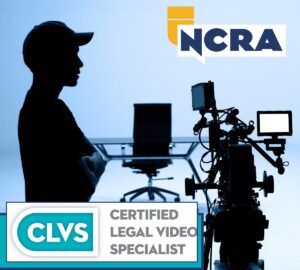By Adam Finkel
In March 2015, the Federal Communication Commission formally implemented the most exhaustive regulations on the quality of closed captioning. This was a result of a lengthy process of NCRA working with its captioner members to develop best practices for captioning quality that defined roles for all of the stakeholders who are involved in creating quality captions. Once these were presented to the FCC, the process snowballed and the momentum led to best practices, many of which were written by NCRA, being formally adopted.
FCC’s best practices stress quality captions
While it is almost impossible to ever be entirely happy with a set of regulations, the FCC’s Final Report and Order was hugely positive for captioners. In particular, the report and order used qualitative measurements for captioning quality, including accuracy, completeness, synchronicity, and placement, as opposed to some of the harsher quantitative measurements that we have seen implemented in Canada.
Over the past year, I have been in constant communication with several of my counterparts at consumer organizations and other stakeholders like National Association of Broadcasters, television networks, and the National Cable and Telecommunications Association. And consensus is clear: the quality of closed captioning has improved. We have also seen more local television stations outside of the top 25 media markets switch to utilizing live captioners versus Electronic Newsroom Technique, often called ENT. Broadcasters have largely followed the best practices and have provided greater preparation material to their captioning provider prior to live news or sports broadcasts. The increase in communication has allowed many broadcasters to be more understanding of and receptive to the needs of their captioners.
Conversion from POTS to IP
This communication is critical during the coming year as we expand our work with captioners. Unfortunately, the IP (Internet protocol) transition over the past decade or so has not gone smoothly for captioners and broadcast captioning in general. As telephone companies began switching away from analog POTS (plain old telephone service) lines to high-speed broadband lines, captioners saw drops and garbled connections increase. In turn, this forced many captioners to strike deals with telephone companies to simply allow for many captioners to remain on the aging analog system that is no longer being fixed if it breaks. Even worse, some captioners cannot accept certain captioning jobs because they live in an area of the country that no longer has access to POTS lines at all.
Now, make no mistake. The POTS network is going away. Telecommunications companies are investing massive amounts of money in ensuring that they upgrade and improve the efficiency of the existing network, and that includes high-speed broadband and fiber-optic cables. In fact, some reports state that POTS could be almost completely gone as early as 2018, leaving us little time to ensure that the entire captioning infrastructure in this country is not crippled. Because of this, NCRA reached out to the Society of Broadcast Engineers in 2015 to inform them of the problem, and we were able to help them publish a news story to their membership on the importance of the issue.
We are currently having detailed conversations with NAB on getting this information out to their members as well. Many broadcasters already have the equipment necessary to receive captions via IP but have not worked with their captioning vendor to ensure that a smooth transition can take place. Additionally, it is likely that stations that do not have this technology will be upgrading their encoder in the near future, and they will need to communicate with their caption provider to be sure that there is never any interruption with captioning services. While there is a long way to go, we have taken tangible steps to address one of the most significant pain points for captioners nationwide.
Commitment to the future of captioning and an expansion of markets
Of course, the captioning community must address other issues in addition to POTS. NCRA remains committed to both expanding access to live captioning to more Americans. While all indications are that Congress does not intend to tackle the rewrite of the Telecommunications Act until 2017, NCRA can lay the groundwork to urge Congress and the FCC to expand live captioning beyond the current top 25 media markets to the top 50. The number of media markets mandated to provide live captioning has not changed since 1996 and NCRA will actively seek to change that which, in tandem with the captioning quality regulations, will create more opportunities for quality captioners well into the future.
If you ever have any questions about any of what NCRA is doing for captioners, please do not hesitate to contact me.
Adam Finkel is NCRA’s Director of Government Relations. He can be reached at afinkel@ncra.org.
As part of its commitment to captioning, NCRA maintains CaptioningMatters.org, a website that aids consumers in understanding the issues surrounding closed captioning and in finding broadcast and CART captioners.









